Bunions, medically termed Hallux Valgus, are a widespread foot condition characterized by a pronounced bony protrusion at the base of the big toe, leading to significant discomfort and pain. This guide ventures into the complexities of bunions, shedding light on their symptoms, root causes, and effective management techniques. Highlighting cutting-edge solutions like Atlas Arch Support Insoles, we aim to equip you with the knowledge and tools necessary for improved foot wellness.
Understanding Bunions (Hallux Valgus)
Bunions, known as Hallux Valgus, stand as a prevalent foot disorder marked by a bony bump at the big toe's base. This issue arises when the big toe inclines inward towards the second toe, causing joint misalignment and the notable bony protrusion. Understanding the origins, recognizing the symptoms, and exploring efficient management methods are essential for individuals grappling with bunions.

Symptoms of Bunions
Bunions manifest through various symptoms that highlight the condition's severity and progression. Prompt identification of these symptoms is crucial for early diagnosis and effective treatment.
The Bony Bump: The Definitive Marker
The visible bony bump at the big toe's base is the most apparent sign of a bunion, signifying the joint's misalignment.
Inflammation and Discomfort: The Underlying Battle
Bunions may also cause swelling, redness, and tenderness around the big toe's base, reflecting the body's reaction to the structural change.
Toe Misalignment: The Subtle Shift
The gradual realignment of the big toe towards the smaller toes represents another significant symptom, impacting the foot's overall structure.
Callus Formation: The Friction Effect
Continuous rubbing between the misaligned big toe and the second toe often leads to calluses, indicating ongoing foot stress.
Joint Stiffness and Limited Movement: Signs of Advancement
The progression of bunions can lead to decreased mobility and stiffness in the big toe, highlighting the need for early intervention.
Footwear Challenges: The Practical Dilemma
Finding comfortable, well-fitting shoes becomes a notable challenge due to the joint misalignment and protrusion caused by bunions.
Origins and Risk Factors for Bunions
Understanding the genesis of bunions is pivotal for their prevention and effective treatment, with genetics and environmental factors playing significant roles.
Genetic and Environmental Factors
Bunions develop from a mix of genetic predispositions and environmental influences, necessitating a holistic management approach.
Inherited Overpronation
Overpronation, or the foot's excessive inward rolling during walking, is a key factor in bunion formation, often passed down through families.
Continuous Big Toe Joint Pressure
Wearing narrow, pointed shoes or footwear that compresses the toes can lead to bunions by forcing the big toe towards the others.
Structural Foot Anomalies
Innate structural foot issues can predispose individuals to bunions by altering weight and pressure distribution across the foot.
Health Conditions Impacting Joint Health
Conditions like arthritis that affect joint health can also contribute to bunion formation, emphasizing the need for comprehensive care.
Effective Relief and Control Strategies
Managing bunions effectively involves a multi-pronged strategy focusing on alleviating discomfort and halting further deformity.
Choosing the Right Shoes: Essential for Comfort
Opting for shoes with a spacious toe box is crucial in bunion management, as it helps alleviate pressure on the bunion and reduce pain.
Supportive Orthotics: Custom and Ready-Made Solutions
Orthotic devices, both custom-fitted and over-the-counter, are invaluable in correcting foot alignment and distributing pressure evenly, offering relief from bunion discomfort.
Pain Management: Mitigating Discomfort
Over-the-counter pain medications like NSAIDs can effectively manage pain and inflammation associated with bunions, ensuring usage follows healthcare guidance.
Physical Therapy: Promoting Foot Health
Physical therapy, including exercises aimed at strengthening and increasing flexibility, plays a vital role in bunion management, enhancing foot health and mobility.
Atlas Arch Support Insoles: The Optimal Bunion Relief Solution

Atlas Arch Support Insoles emerge as a top recommendation for bunion sufferers, thanks to their unique features:
- Pronation Control: These insoles help correct overpronation, a common bunion aggravator, by keeping the foot aligned and reducing stress on the big toe joint.
- Even Weight Distribution: By evenly distributing body weight across the foot, these insoles lessen the burden on the bunion area, alleviating pain during prolonged standing or walking.
- Alignment Enhancement: Supporting the arch and ensuring proper foot alignment, Atlas Arch Supports minimize pressure on the big toe joint, crucial for managing bunion discomfort.
- Shock Absorption: The insoles' cushioning absorbs walking or running impact, lessening the bunion's stress and enhancing comfort during movement.
- Customizable Fit: Available in various sizes and shapes, Atlas Arch Support Insoles guarantee a perfect fit, providing targeted support where needed most.
- Increased Comfort: These insoles improve overall foot comfort and reduce pressure points, allowing those with bunions to undertake daily activities with minimal discomfort.
- Proactive Prevention: For individuals predisposed to bunions, such as those with flat feet or overpronation tendencies, Atlas Arch Support Insoles act as an effective preventive measure.
In conclusion, understanding and managing bunions demands a comprehensive strategy that tackles both symptoms and root causes. With informed lifestyle changes and supportive measures like Atlas Arch Support Insoles, achieving relief from bunion discomfort and enhancing foot health is within reach. Adopt these strategies for a more comfortable and confident stride, free from the limitations imposed by bunions.




